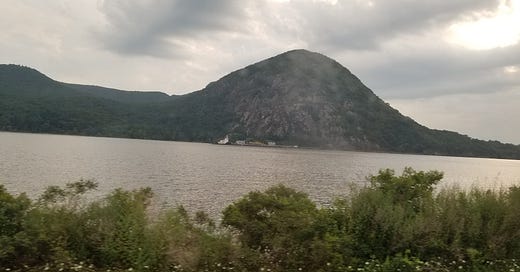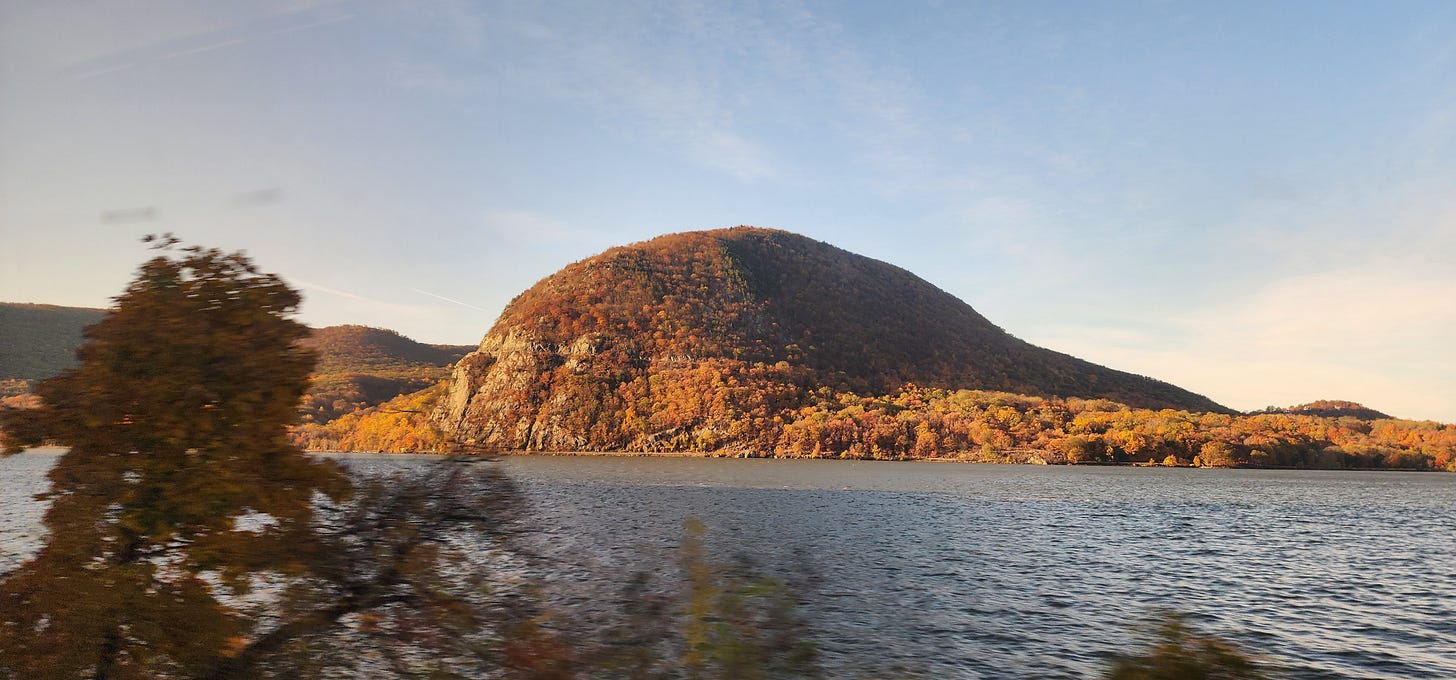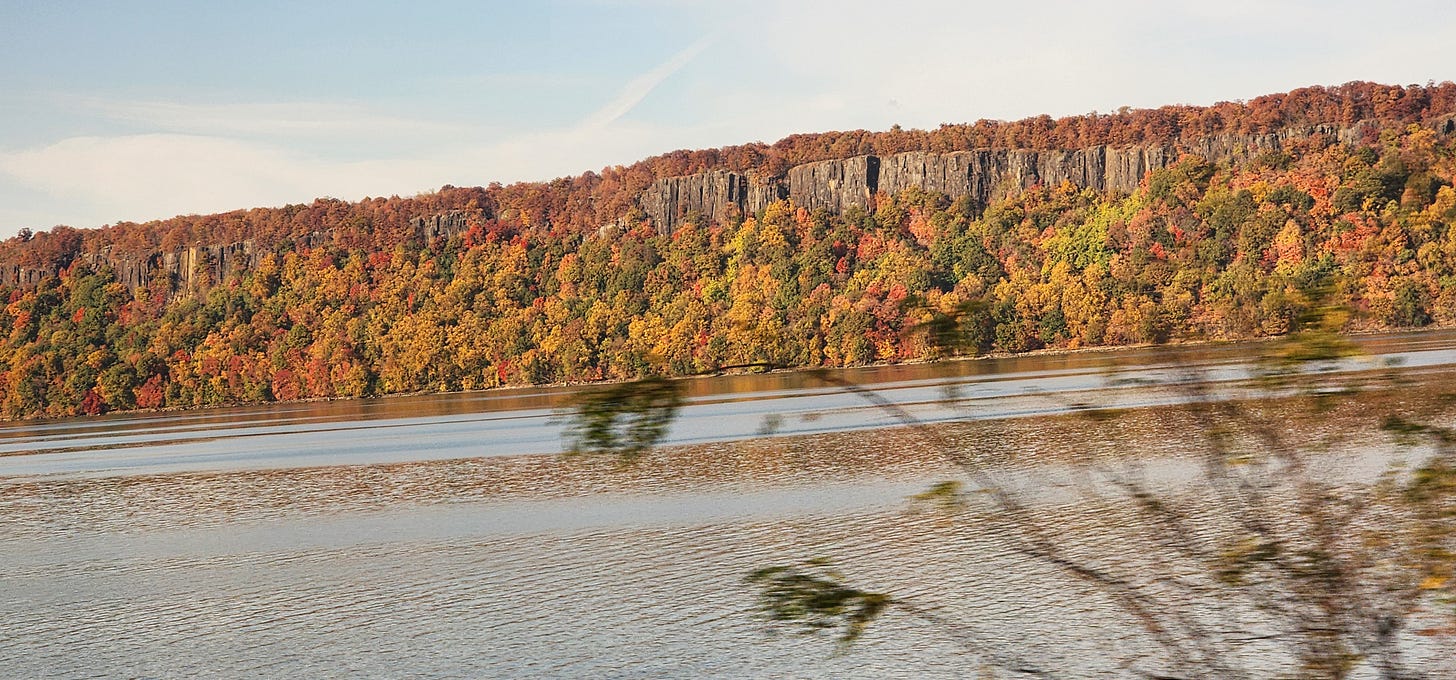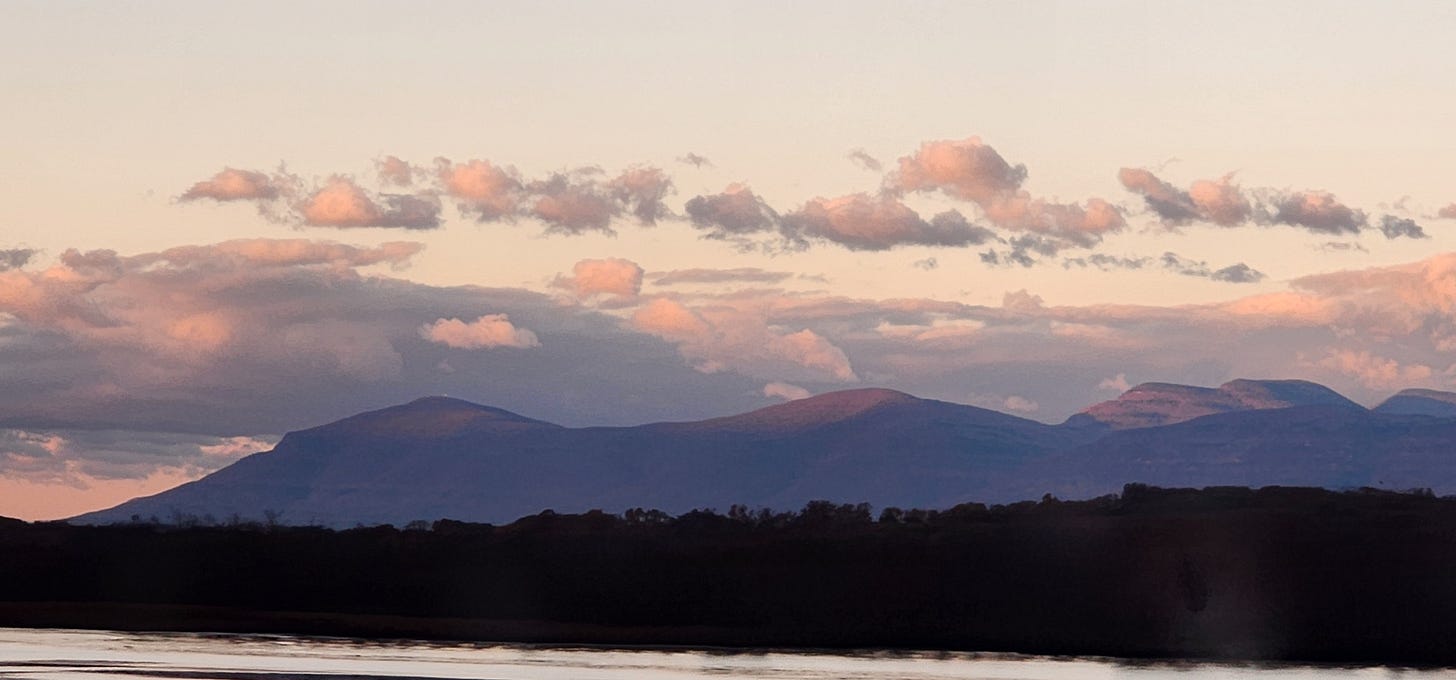Rock On!
Some thoughts about geology, song writing and traveling down the Hudson to Penn Station. Yeah, I got all those topics in this piece.
I spent my formative years in Gilbertsville, NY, as frequent readers of this page know. The village is in Otsego County, in what the state tourism board calls “Leatherstocking Country,” because of the connection to nearby Cooperstown and James Fenimore Cooper’s iconic tales of this part of NY State.
Otsego County is a place of great natural beauty, with creeks, rolling hills, forests, towns and villages nestled in its many valleys. Gilbertsville is one of those villages, surrounded by hills. My family lived on one of those hills, on what is officially Route 4.
We owned the land behind our house, which was a hill rising to a pasture about a quarter of a mile above. The hill itself was basically untouched by man, and had wild apple and pear trees, lots of shrubs of all kinds, including blackberry bushes. We had a lot of scrub long-needle white pines and young trees of different varieties growing everywhere.
The rock formations on that part of the property were primarily shale created millions of years ago, with layers upon layers of sediment compressed into a rock that could spall, that is break off in sheets when exposed to continued weather conditions common to the area. There was quite a lot of shale and other types of rocks in the area – at one time Gilbertsville had an active quarry not far from us and still has miles upon miles of flat stone walls stacked with no mortar that have lasted intact for almost two centuries.
I’ve written before about an outcropping on the hill that was not quite deep enough to be called a cave, but the outcropping, the roof, for a better term, would erode in the spring, flaking off into shallow ponds created by constant spring water runoff. Around this tiny pond would grow bright green moss and lichen and sometimes tiny seedings, making it look like a scene from a fairy tale. There was another similar outcropping that was just above our backyard.
There were also stand-alone boulders large enough to spread a good-sized picnic on which rose in the middle of the field. There weren’t many of them, but one of the ones closest to my house was MY rock. This large boulder emerged from the ground on a pretty level part of the hill and rose perhaps five or so feet high from the front. if approached from behind it, was quite easy to just walk onto it, as the back was almost totally underground. (I may be exaggerating its height, but that’s how I remember it.)
I could still see my house from the rock, so it was a good place to go to sit and contemplate the world and my place in it during my teenage years. For many high school girls, those years between 14 and 18 could be awful and soul crushing. Mine was, but I could write poetry and songs! My rock was my special ME space where I could express my life to the winds and get it out of my system. Since I was a pretty solitary kid, it was perfect for me.
I began by writing poetry. I liked poetry and had a couple of my poems published in a journal of high school poetry sponsored by who-knows-who. My English teacher submitted them. We were writing haiku and free poetry, and I had a couple of decent ones that appeared in a couple of those journals. (Don’t ask me what they were or where they are, they were lost in one of my several moves.)
Sometime after grade 10, I taught myself how to play guitar. After I learned enough chords to craft my own songs, it was only a small step from poetry to lyrics. On a nice day, I’d pack my guitar in the case and walk up the hill to my rock. I’d take out the guitar, a pen and paper and sit on the edge of the rock and write songs.
Many were about a love that I had never had at that point but wished for. Others were laments about my self-pitying personal shortcomings and appearance, about the Vietnam war, which was still going on, about peace and love, God and grace and the beauty of nature. I also sang other people’s songs; I was a great fan of Carole King. She got me. She was also a frequent user of Major 7th chords in her music. Many of my songs had Major 7th chords in them too. I loved them, you can’t go wrong.
When I left for college, I abandoned my rock. I didn’t need it anymore, I had a life full of new people, new activities and an appreciation for other places, other forms of expression. I don’t think I ever had a goodbye visit. I kind of wish I had. That rock was good to me. It was my rock in more ways than one.
I also had a rock collection when I was younger. My parents gave me one of those starter kits with small examples of different minerals labeled and glued on a base. I loved it. So many colors, textures, shapes and even some bling. Crystals, lumps with veins of color, geodes, the whole shebang.
I used to go rock hunting, especially around bodies of water. I found a rock studded with garnets near a creek behind the Catholic church in Edmiston one day when my mother was playing organ there for a rehearsal. I found mica sheets on our old coal furnace door in our basement. (I wasn’t supposed to take that off the door, but I did get a small sheet.) My Dad and I found a fossilized snake encased in shale one year, that was amazing. I found all kinds of mica schist, pyrite, white and rose quartz veins and other local stuff. Geology was my thing! (Yes, I was an odd child.)
I have to say that when I went to college, I went to a Geology 101 class to check it out. I didn’t last more than a couple of days. It was all chemistry and math, and no mention of my beloved rock formations. I was pretty naïve, and it was nothing like the earth science we had in high school. Nope, back to my exploring amateur rock collecting status, thank you.
But I never lost interest in rocks and minerals. To this day, whenever I go on a trip, I try to find a native stone to bring back with me. It must be special in some way, not just any old rock. Once, I went on a working weekend at an employer’s summer home in the Berkshires and found a ton of cool rocks. I had to control myself and still ended up with a very heavy suitcase on the way home.
I’ve found interesting rocks on the banks of the Hudson here in Troy, some native, some aggregates of long-ago industrial brick factories with the mortar still attached, all rounded from being polished by the river. I found flint on an outcropping of forest, on the surface of the ground in a place where Native Americans harvested flint for arrowheads and tools.
I travel on Amtrak between Albany and Penn Station, Manhattan at least twice a month. I generally sit on the river side of the train. I can see the Catskills in the distance near Hudson, and much further down, Storm King mountain near Beacon. That mountain and the rest of that range are a massive example of the movement and majesty of the earth in the millions of years it took to create them and the river below. It’s especially impressive in the winter, before the trees cover up the stone.
As we approach NYC, the Palisades rise up on the New York/New Jersey side of the river. The cliffs stretch from Jersey City almost to Nyack, NY, a span of almost 20 miles. The height of this range is deceptive from the opposite side of the river. Some quick research reveals that they are 300 feet high near Weehawken, NJ rising to 540 feet at their highest point near their northern terminus. The drop to the Hudson would be even more impressive save for the centuries of rockfall that has gathered at the base.
The Palisades, geologists tell us, were created by molten magma forcing its way upward through sandstone, cooling before meeting the surface. Over the millennia, the sandstone eroded leaving these columns of basalt. The cliffs are pretty stable, but in 2012, a slice of the cliffs collapsed in a spectacular rockfall that can still be seen today from the train. Fortunately for all of us, the Palisades won’t be destroyed by industry or real estate, they were designated a National Natural Landmark in 1983 and are part of the Palisades Interstate Park.
As the train continues into the city heading for Penn Station, it goes into a tunnel which peeks in and out of the surface until going into the tunnels leading to Penn Station and my last rock story. This track is called the Empire Connection, and it is the only connection Amtrak uses to run its trains upstate to Albany and beyond. It’s also called the West Side Connection and was originally split off from the old High Line viaduct. This is at one of those places where the train runs on the surface. It’s part of the Hudson Yards. All this makes for a great story in itself, but today I’m here for the bedrock.
The bedrock of Manhattan. It’s part of the reason so many tall buildings can rise from the ground as high as they do. They are anchored into the island’s bedrock. “Solid as a rock,” as New York’s Ashford and Simpson used to sing back in the day is the foundation upon which a city stands. Manhattan’s bedrock is so dense because it’s made of a rock called schist.
There are several different kinds of schist in the bedrock under different parts of the island. The schist bedrock under Penn Station is a particularly high grade of metamorphic rock, formed from sedimentary or igneous rock which has been subject to millennia of conditions of intense heat and pressure. Igneous rock comes from cooled magma, sedimentary from compressed layers of sediment. This is rock made from other rocks. What that means is you don’t get rock much denser and harder than this.
You can see where they tunneled and blasted through the bedrock to lay the tracks. Sometimes they build on top of the outcroppings and you’ll see walls of schist with OSB and concrete on top supporting the buildings and roadways above. As the train continues to approach Penn Station, the track bed widens, as more tracks expand to meet more bedrock walls.
It’s a world of its own underground under the blocks that take up Penn Station/Madison Square Garden, the surrounding streets and Moynihan Station, which was built as the Farley Post Office. It’s a huge multi-story cave with parallel and cris-crossing tracks and platforms. There are isolated work islands, scaffolding and stairs leading to places the public will never see, storerooms and tracks with heavy railroad equipment.
NJ Transit, Amtrak and the Long Island Railroad all converge here. Some parts of it are relatively new, others are part of the original Pennsylvania Station designed by the Gilded Age firm of McKim, Mead & White. While their magnificent Penn Station is gone, (also another story) this underground world still retains some of the original platforms and tracks, the maze of pedestrian passageways and signage, as well as the brass railings on various stairways leading to some of the platforms, polished by a million hands.
I originally intended to write a story about the world under Penn Station, but I couldn’t really find out too much about it. That’s probably a good thing, security-wise, but disappointing. There are train sites that go into great detail about the Hudson Yards, NJ Transit, the tunnels and the trains that use them, and history sites that only talk about the architecture and history of the original Penn Station, which is fascinating and sad, but not what I needed.

Science fiction and lovers of dystopian literature love that world under the street. As the train slowly enters the complex, it’s easy to imagine groups of underground people living in the shadows. If graffiti artists can get down there, so can almost anyone else. Parts of this world are dark and mysterious, while only a short distance away, thousands of commuters and travelers exit and enter their trains, on tracks that have been staked out for each train line. I’m sure people who commute in and out everyday have lost their sense of wonder at this world below, but I hope I never stop appreciating the engineering and complexity of a turn of the 20th century marvel.









Beautiful piece Suzanne, Thank you! I can totally relate to your interest and exit from the college Geology class in favor of maintaining mystery, memory and meaning embedded in stone. Thanks for letting us take this ride with you along the Hudson River Valley through the Palisades and into the bowels of Penn Station. Also, Thanks Rev Stephanie. I’m going to check out the novel you cited.
I live half the year in Brooklyn and the other half in Gilbertsville. I’m on Mill St and Bloom.